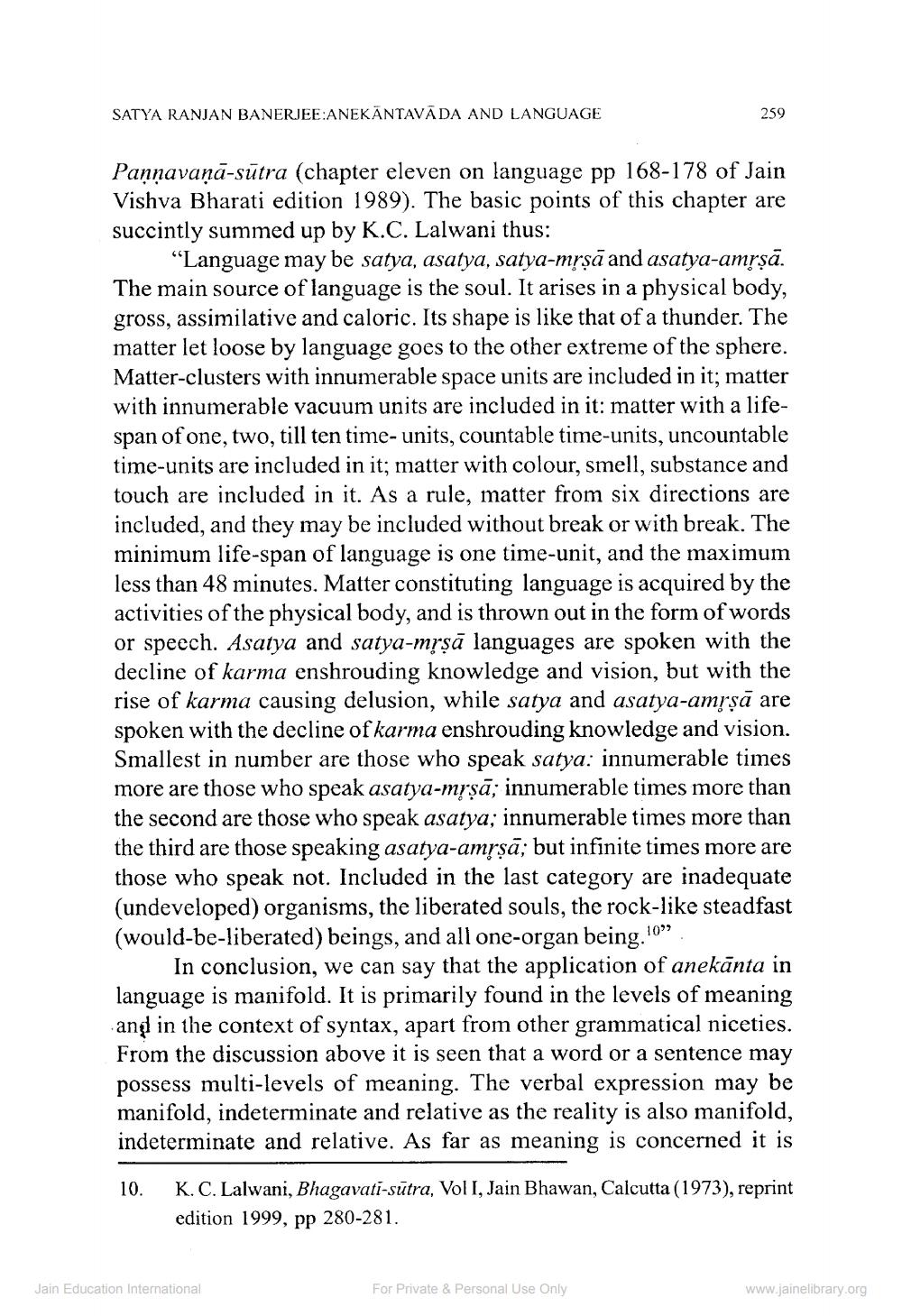________________
SATYA RANJAN BANERJEE:ANEKANTAVĀDA AND LANGUAGE
259
Pannavaņā-sūtra (chapter eleven on language pp 168-178 of Jain Vishva Bharati edition 1989). The basic points of this chapter are succintly summed up by K.C. Lalwani thus:
“Language may be satya, asatya, satya-myşā and asatya-amyşā. The main source of language is the soul. It arises in a physical body, gross, assimilative and caloric. Its shape is like that of a thunder. The matter let loose by language goes to the other extreme of the sphere. Matter-clusters with innumerable space units are included in it; matter with innumerable vacuum units are included in it: matter with a lifespan of one, two, till ten time- units, countable time-units, uncountable time-units are included in it; matter with colour, smell, substance and touch are included in it. As a rule, matter from six directions are included, and they may be included without break or with break. The minimum life-span of language is one time-unit, and the maximum less than 48 minutes. Matter constituting language is acquired by the activities of the physical body, and is thrown out in the form of words or speech. Asatya and satya-mrşā languages are spoken with the decline of karma enshrouding knowledge and vision, but with the rise of karma causing delusion, while satya and asatya-amrşā are spoken with the decline of karma enshrouding knowledge and vision. Smallest in number are those who speak satya: innumerable times more are those who speak asatya-myşā; innumerable times more than the second are those who speak asatya; innumerable times more than the third are those speaking asatya-amrşā; but infinite times more are those who speak not. Included in the last category are inadequate (undeveloped) organisms, the liberated souls, the rock-like steadfast (would-be-liberated) beings, and all one-organ being.!”.
In conclusion, we can say that the application of anekānta in language is manifold. It is primarily found in the levels of meaning and in the context of syntax, apart from other grammatical niceties. From the discussion above it is seen that a word or a sentence may possess multi-levels of meaning. The verbal expression may be manifold, indeterminate and relative as the reality is also manifold, indeterminate and relative. As far as meaning is concerned it is
10.
K.C. Lalwani, Bhagavati-sutra, Vol I, Jain Bhawan, Calcutta (1973), reprint edition 1999, pp 280-281.
Jain Education International
For Private & Personal Use Only
www.jainelibrary.org




